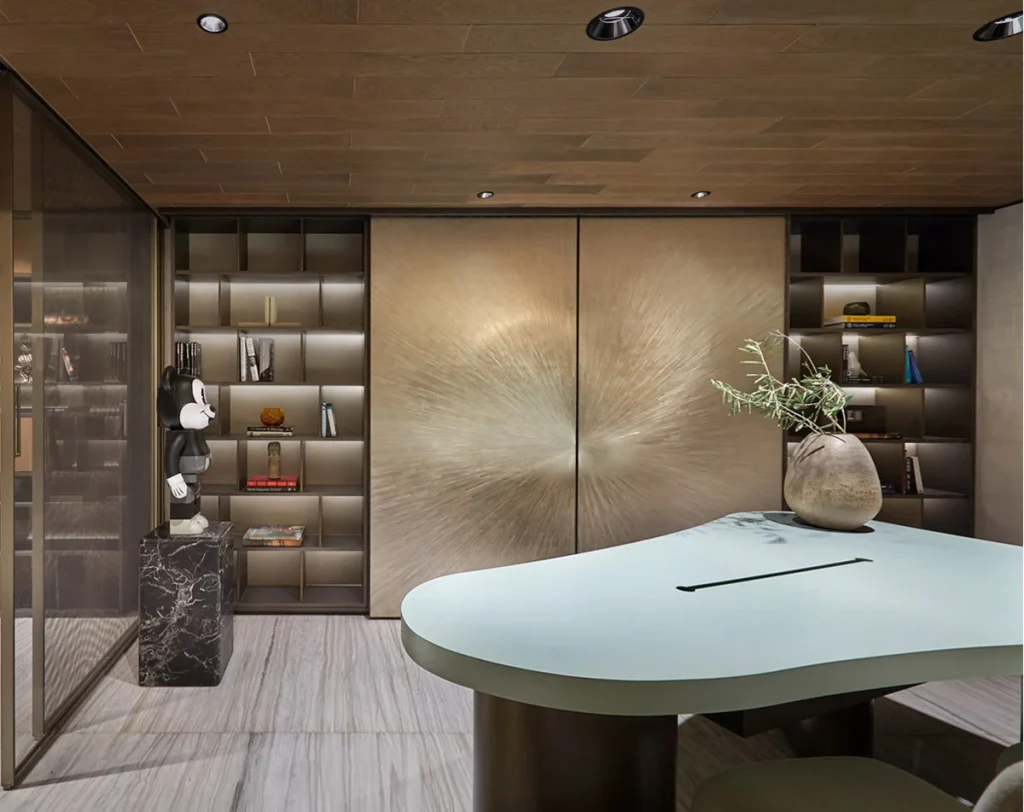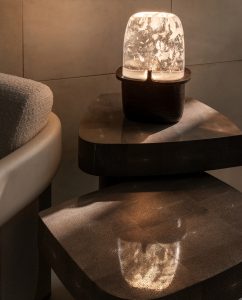I was once asked why straw fascinates me. Perhaps it is the fairy-tale idea of taking a humble material like the straw that filled the fields around my home growing up, and making it into something as beautiful and precious as gold.
I first came across the art of straw marquetry in a book about the decorator of the early Twentieth Century Jean-Michel Frank. Monsieur Frank made furniture and lighting from bronze, shagreen, parchment and wood, but his most iconic rooms and apartments had walls and furniture that were covered with straw marquetry. The special aspect of this straw is that it has a surface that reflects light uniquely and subtly – it can look a bit like gold in its natural state. In the ebony, bronze, verdigris, burnished metals, beechwood and other colours that we make in our workshops, the straw loses the gold tones but gains in bringing light and depth to a rich palette.
One inspiring image shown below is of an apartment in the rue de Babylon, Paris, that shows the straw lining bookcases. The linear straw catches the light and lends a warm, vital quality to the space – literally adorning and accenting the room with panels of light.

With these inspirations I started on a journey to discover the technique and sources for the material. At first it wasn’t easy. The Musee des Arts Decoratifs in Paris has very limited examples of straw. Any books written about the process are long out-of-print. Existing artisans were few and far between and are justifiably guarded about the discoveries they have made and techniques they have invented. Just finding straw that has been dried and cured and prepared for marquetry is extremely difficult. Straw harvested for bread is destroyed during reaping while straw that is to be used for marquetry has to be planted and carefully cut. Marquetry straw is of a particular variety that grows to a greater length than other types of straw. My wife’s family live in rural France, and it was through them that I discovered a farmer who produced straw for the Parisian marquetry experts.

We have worked with straw marquetry since 2005 and have now become the largest producer in the world. We use straw marquetry to make beautifully detailed cabinets, tables, mirror frames and lamp bases, and we have produced hundreds of square metres of wall panels in straw marquetry for custom residential and commercial projects around the world. Our Le Mur collection of wall panels in natural materials offers an array of colours, finishes and patterns in straw marquetry that are evolving and developing all the time and can be customized to fit any room.

Straw is a subtle material that requires every person involved to work to the same colour palette, width of straw and strength of inlay. The material holds endless possibilities of pattern, tone and application. The process is entirely done by hand in our workshops from cutting and trimming the raw straw, to dyeing and colour matching, splitting and flattening to make ribbons of straw and finally the intricate piece-by-piece inlay that creates the final pattern. The workshop uses only hand tools and water-based adhesives and dyes that have been used for centuries. Enormous patience and quality control comes in the preparation of the straw and the final finish. The end result is a jewel-like luminous surface that plays with and reflects light and colour like no other material.

Straw marquetry is suddenly in vogue. After decades in the relative shadows of the decorative arts, it is today finding a much stronger place in great interior projects as its unique lustrous and reflective surface quality brings a sense of craftsmanship, artistry and quality to traditional as well as minimal spaces. This material turns a wall, niche, cabinet or table into a shimmering, textured and alluring presence in the room, a bejeweled surface that plays with and reflects the light like no other.












